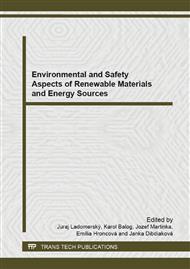p.282
p.288
p.292
p.300
p.306
p.312
p.318
p.324
p.330
Fire Safety and Security Threats Identification and Elimination
Abstract:
This paper deals with the topic of fire safety and security measures and their mutual interaction. A designer or stakeholder may be confronted with conflicting objectives regarding life safety and object security. Often, escape routes pass via areas that are under non-emergency conditions subject to access control, accessible only to members of staff, contractors, etc. When fire alarm is activated, it is necessary to provide fast and unhindered evacuation from the premises, which may involve using restricted-access back-of-house areas. On a case study – section of a shopping centre – the concepts of both fire safety and security are presented. Firstly, the areas are analysed in terms of their importance from life safety and property security points of view and subsequently solutions are proposed to address any issues. In certain cases a balance between safety and security requirements must be found, i.e. it is not possible to fully satisfy both objectives at the same time, whereas in other fire safety and security systems have been found mutually complementary.
Info:
Periodical:
Pages:
306-311
Citation:
Online since:
August 2014
Authors:
Keywords:
Price:
Сopyright:
© 2014 Trans Tech Publications Ltd. All Rights Reserved
Share:
Citation:


